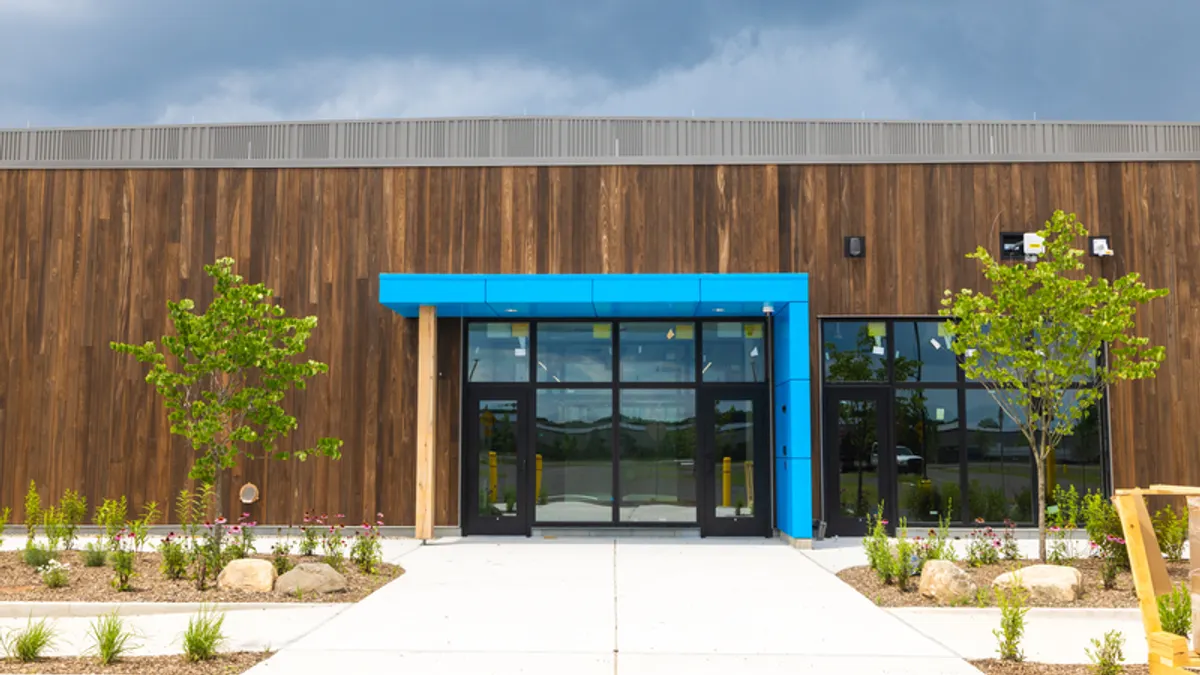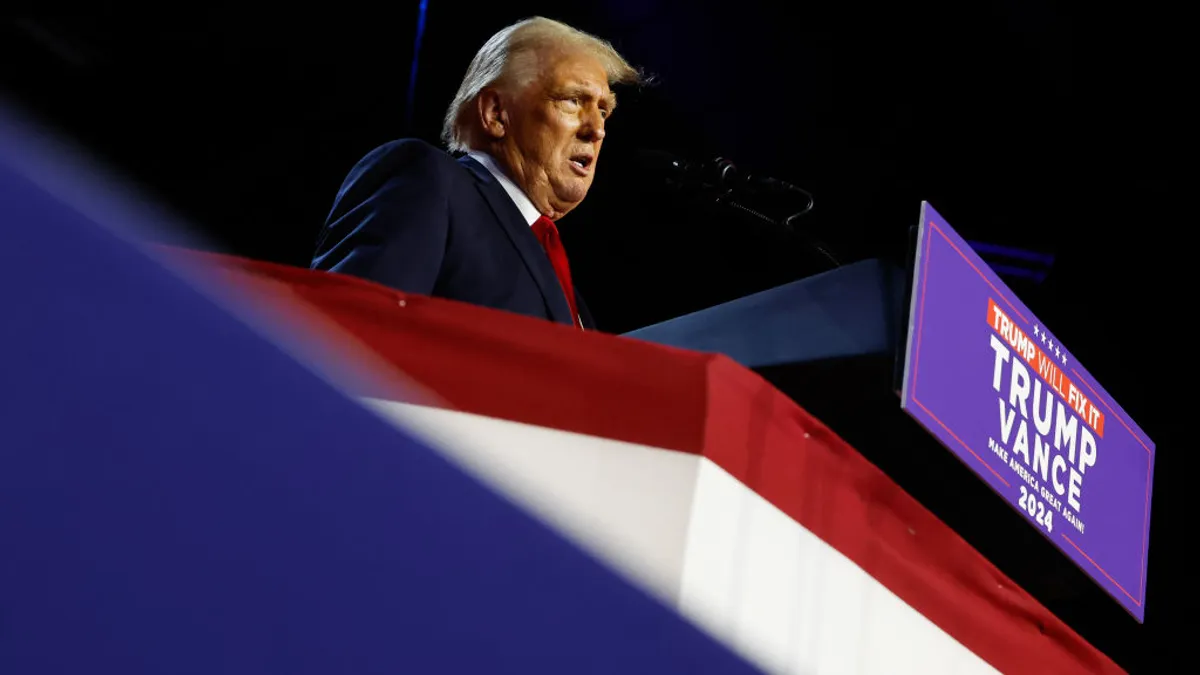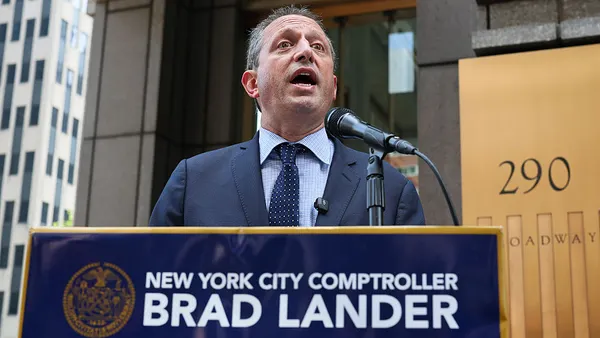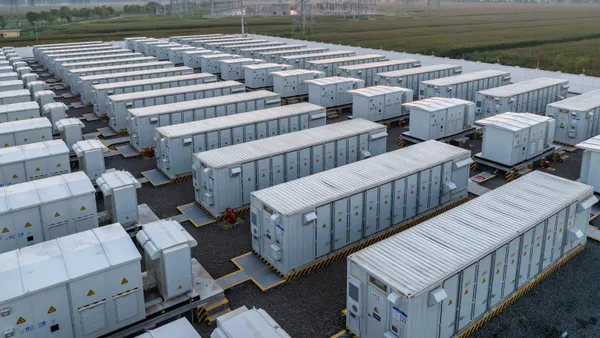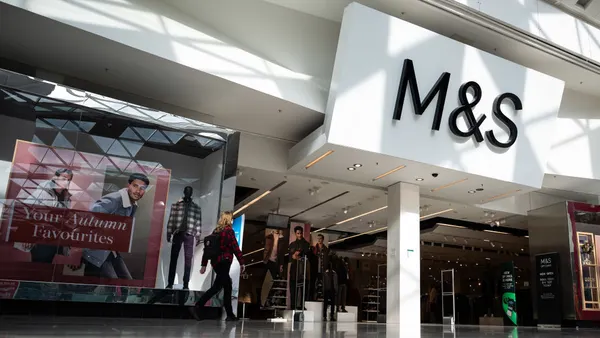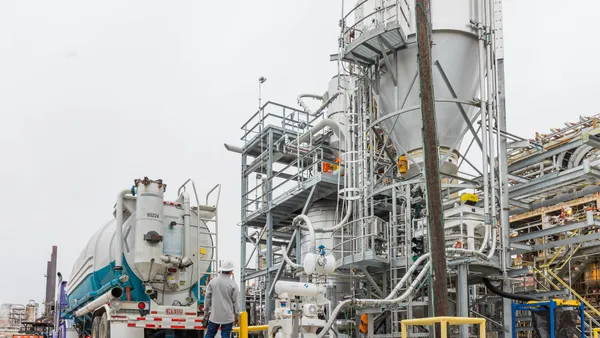Dive Brief:
- Amazon announced Thursday that it opened a delivery facility in Elkhart, Indiana, which has a structure that is largely made of mass timber — a low-carbon construction material — and includes more than 40 sustainability initiatives, according to a company blog.
- While its function to customers remains the same, as a last stop for packages, the e-commerce and tech company said it intends to use the facility as a lab for sustainable construction and facilities practices. Among these include the use of lower-carbon asphalt and concrete, permeable pavements and a water reclamation system.
- Mass timber is a durable substitute for industrial building materials like concrete and steel, and a 2022 Building and Environment study found mass timber buildings have an average of nearly 43% lower embodied carbon emissions than reinforced concrete buildings. Other tech giants like Meta and Microsoft have also begun integrating cross-laminated timber into some data center structures.
Dive Insight:
Amazon has a 2040 target to hit net-zero emissions across its global operations, and it noted in the Aug. 9 blog that building and construction accounts for 40% of global greenhouse gas emissions, according to the Carbon Leadership Forum.
The e-commerce giant has used mass timber in other structures before, including its HQ2 campus in Arlington, Virginia, but not at this scale, Amazon Vice President of Global Realty Daniel Mallory told ESG Dive.
Mallory said in an interview last week that the innovation for the facility was the convergence of initiatives that it hopes to learn from and share with the industry. The global realty executive said he views it as a “critical” Amazon responsibility to engage with industry on sustainability measures, in alignment with the company’s climate pledge.
“Doing a project like this here allows us to continue to earn the license [to engage with the industry], not just because of scale, but because we also have attention to detail, and we can help engage and inform based on that level,” he said.
Mallory said not every sustainable measure included will ultimately be the most useful in Indiana, but could help at other company properties globally. For example, he said the facility’s water reclamation system — which will recycle rainwater, filter and store it to flush restroom toilets — is not as pressing of a matter in Indiana, which has inexpensive, abundant water resources, but may be more useful in areas with constrained local resources.
General contracting on the project was done by Graycor Construction, and architecture company ZGF served as the design architect and sustainability lead. Other companies involved included low-carbon concrete manufacturer Carbon Cure, mass timber company Sterling Structural, thermally-modified wood provider Arbor Wood and wood fiber insulation company Timber HP.
While the slate of other initiatives holds potential promise for other Amazon facilities, the mass timber use helps provide a “proof of concept” for scaling the industry to help drive down price premiums, Mallory said. Graycor Construction Project Executive John Denbo told ESG Dive, who led the project, said some mass timber manufacturers and suppliers have been spending money to increase their capabilities. As demand increases, he expects pricing to become more competitive with traditional methods.
“As [mass timber] becomes more prevalent, the pricing is going to come down,” Denbo said in an interview Wednesday. “Is it ever going to be the same price? Probably not. But this is something people have to want to do. There's some responsibility here that people are taking on to make sure and decide that they want to lower their carbon footprint.”
Denbo said Graycor, which has a 20-year working relationship with Amazon, has constructed delivery facilities for the company before, typically out of concrete and typically developed by a third-party. In addition to incorporating mass timber and the sustainability measures within the project, Amazon also self-developed the property, which Denbo said provided Graycor an opportunity to work directly with them. He called the project a result of “partnership in a forward-looking project.”
Clarification: This story was updated with details about mass timber's increase in manufacturing capabilities.


